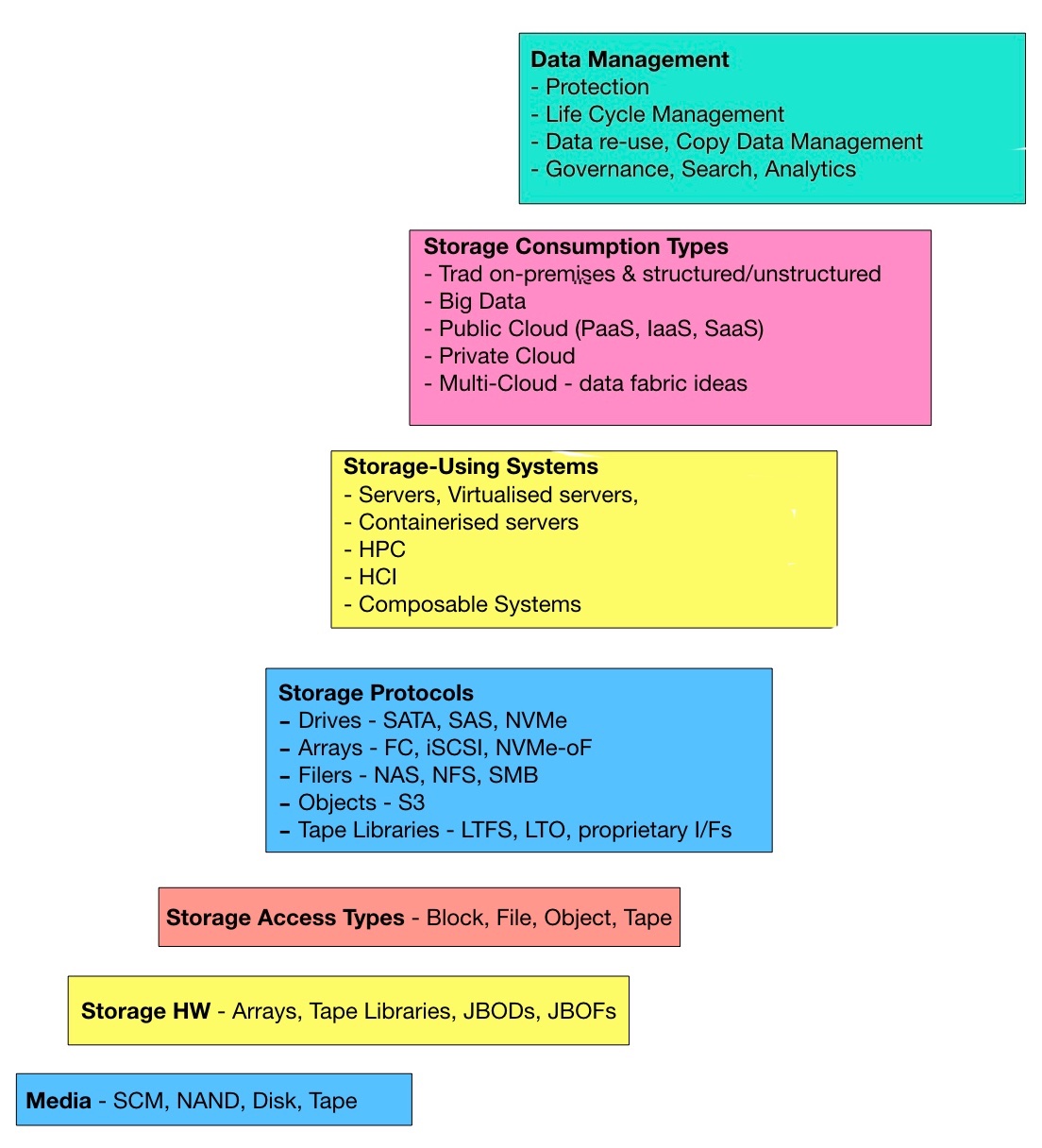The storage industry can be bewildering, with so many hardware and software technologies and overlapping products. How to make sense of it all?
Let’s think of computer storage as a layered stack with media hardware at the bottom and data management at the top. In my mental landscape this stack has seven layers:
- Media
- Storage hardware
- Storage access types
- Storage protocols
- Storage-using systems
- Storage consumption types
- Data management
These layers can be sub-divided into different technologies or product classes. For example, storage-using systems can be partitioned into servers, high performance computing (HPC) systems, hyperconverged infrastructure (HCI) systems and composable systems.
Servers can be further categorised as bare metal, virtualized or containerised.

The storage hierarchy landscape chart is my own mental map and is neither exhaustive nor definitive.
I use this framework to generally place a storage technology or product and as an aid to map supplier activities. This helps me better contextualise the storage industry and to assess the import of technology trends and deals. For instance, what is one to make of the Cohesity and HPE partnership, the Red Hat NooBaa acquisition, Vexata’s kick-ass storage arrays, and rival multi-cloud data fabric ideas.
I hope you find this Blocks and Files storage stack layer cake useful too.








